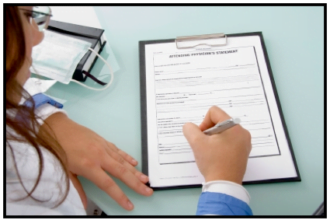 Learning to write captivating copy from the halls of journalism:
Learning to write captivating copy from the halls of journalism:
 Learning to write captivating copy from the halls of journalism:
Learning to write captivating copy from the halls of journalism:
Why doesn’t a patient pamphlet grab you like the first sentence of a New Yorker health care article? I believe that it boils down to intent. Pharma copy is written from the point of view of “I have important information I need to tell you.” Journalistic copy starts from the premise of “I need to capture your attention.”
The aim of a news story is to get eyeballs on the page. The objective of a pharma pamphlet is to impart information to the patient. Or in the worst case, just fill the legal obligation to provide the information.
I gave a journalist friend of mine some pharma copy to rewrite. I was curious about the differences in how it would be written, particularly the opening sentences. Even after removing his expletives, you can see how much more engaging the journalistic version is.
| Pharma Copy* | Journalism Story |
| While some people in your life may know what to say when you tell them you have ALS, others may not know how to respond—or worse, may say something off-the-wall, or even hurtful | The first time John wished he could just say “beam me up Scotty” was when he went to his first Thanksgiving dinner after being diagnosed with ALS. He thought his entire extended family was holding some kind of contest to see who could say or ask the most inappropriate thing. |
*Disease state has been changed
The journalistic model of copy writing requires a significant shift. At the end of the day, it is about holding your information to a higher standard—patient engagement. Or as Tony Rogers in his About.com Guide to journalism says, “So when making the rounds of your beat, always ask yourself, “How will this affect my readers? Will they care? Should they care?” If the answer is no, chances are the story’s not worth your time.”
The key concept to extrapolate here is the need to interest and entertain your reader. So here are a couple thought-starters on how to export this idea to development of pharmaceutical information, particularly in the patient space.
- Define for your agency “what good looks like.” Gather a few examples of how your product and/or disease state has been covered in the popular and not so popular press. I am riveted by anything that Jerome Groopman writes. Look for good examples of science made accessible. Look for health care storylines that grab people. Compare that to your copy.
- Evaluate what is most/least compelling on your website. We have tended to discount “the click” in pharma. But “eyeballs on the page” is the metric used by online media evaluate the success of their endeavors and determine what gets covered in the future.
- Hire a freelance journalist to have a “whack” at your copy. Your procurement friends will love you as journalists are about half the cost of pharmaceutical copywriters. And many do a very good job at explaining difficult scientific concepts or MOA’s.
So take a look at your copy. Would you read it if you didn’t have to?









